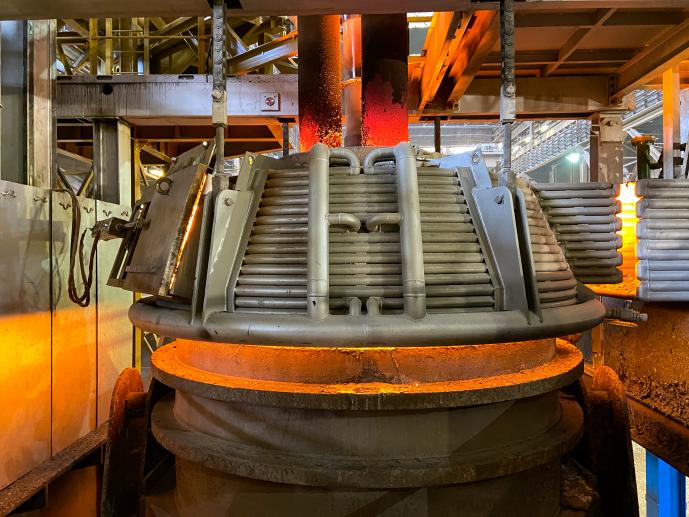
As part of its production process development and efficiency upgrading plan, Acciaierie Venete has recently implemented a major investment focused on upgrading its secondary metallurgy processes in the Padua plant.
The project reconciles two conventionally antithetical prerogatives: quality and productivity. The quality improvement strategies followed are transformed into levers for the evolution of steelmaking plants and their productivity, also making it possible to extend the range of engineering steels offered to the market.
The new equipment was installed and commissioned without affecting operation of the melt shop, thus guaranteeing production continuity without any interruption of steel supplies.
Secondary metallurgy is a key area of the company's development plans in terms of new products, improvement and consolidation of standard quality levels, higher productivity, creation of know-how, and upskilling of personnel.
The upgraded out-of-furnace shop, which is the only one of its kind in the Italian steelmaking industry, is now composed of: 3 ladle furnaces (LF), 2 vacuum degassing plants (VD) and 1 slag raking machine. These characteristics must be considered also alongside the ability to add specific ferroalloys under vacuum. Secondary refining process management is aided by a series of dedicated and interconnected automations.
From a qualitative perspective, the new set-up supports the achievement of several strategic objectives:
- production of clean steels using a metallurgically robust, reliable and reproducible process;
- improvement of inclusion properties in the production of engineering steels, benefiting all customers across the board;
- development of new production methods in secondary metallurgy, exploiting the ability to add ferroalloys during the vacuum treatment process;
- precise management of the various different production methods.
In terms of impact on production indicators, initial values were found to be in line with projected results:
- productivity for engineering steels subject to vacuum treatments reflected an increase of between +10% and +15%;
- performance has been improved thanks to more efficient ladles management in the LF zone. This translates into an initial energy saving of 3% (which should reach 5% when the system is operating at full capacity) with a consequent overall reduction in electrodes consumption;
- the layout rationalises the ladles movement and idle phases, with reduced wait times and dead times in casting sequences.
These advances in secondary metallurgy are part of a programme of implementing the technological innovations necessary to maintain a position of leadership in the engineering steels sector in Europe.
